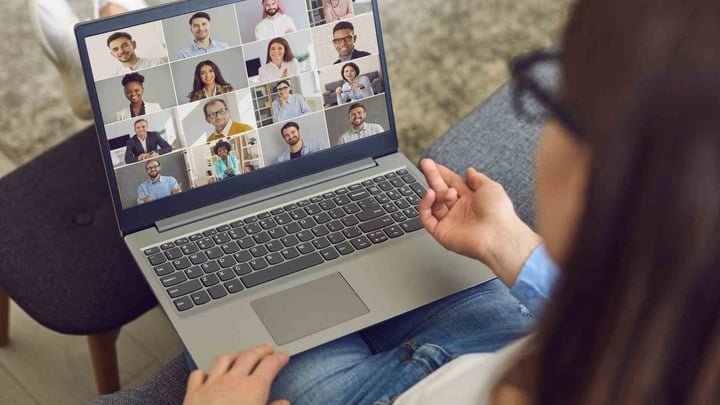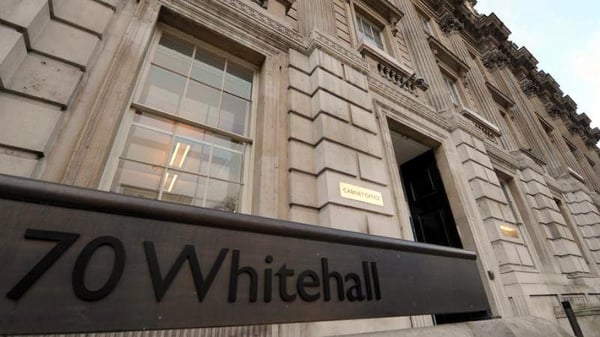Employee engagement & performance in a digital workplace

Although government organisations had for years access to the digital tools required to enable flexible ways of working, it was not until the pandemic that they were widely used out of necessity because of the national lockdown.
Three executives from the Cabinet Office, Crown Commercial Service (CCS) and customer experience management company Medallia, discussed how lockdowns changed their organisations in a panel hosted by Government Transformation magazine.
Experiencing the benefits that a digital workplace unlocked contributed to a change in mindsets towards hybrid working. The challenge, however, is maintaining those gains and building up on them.
Digital workplaces: pre- and post-pandemic

The CCS is a large organisation with several offices across the UK, including major sites in Liverpool, Norwich, London and Birmingham. For Darren Thompson, Deputy Director of Corporate Pillar - Operations at CCS, before the pandemic, flexible working meant travelling to meet colleagues and customers based on other sites.
Although his team had the digital capability to carry out online meetings, Thompson, who works in Newport, South Wales, said that discussions with external stakeholders would always happen face-to-face or by telephone. Even though staff had laptops and access to Google Meet, the prevailing organisational culture favoured physical meetings over online ones.
“Back then we weren't great at using the technology that we have,” Thompson said. “For our organisation, it was about using the technology that we already had. We began using it and in the first year we stayed as productive as we were beforehand, even more productive because we were supporting the Covid activity.”
The CCS office in Newport has now been redesigned and refurbished to become a workplace fit for the future that supports hybrid working and promotes collaboration through the creation of more meeting rooms, quiet areas, “think spaces” and a dedicated room for training.
“We’ve moved away from banks and banks of desks and set the office up for collaborative working,” Thompson said. “We’re just on the road to fully embracing hybrid and digital working.”
Inclusive meetings
The team of Tammy Noel, Deputy Director of Civil Service Organisation Development and Design at the Cabinet Office, also used to rely heavily on in-person meetings before the pandemic.
Although switching to a fully remote setting took them aback, Noel and her team soon appreciated the benefits that digital ways of working unlocked, including the flexibility to bring stakeholders from different departments and communities quickly together thanks to video conference platforms.
“We were a team who very much relied and loved being in the face-to-face space,” Noel shared. “We did a lot of interventions working directly with clients or with our community that we felt were better in that physical environment. So when the pandemic hit, it was a big shock for us but we adapted very quickly and moved a lot of our interventions online and worked out ways to do that.”
Whereas before Covid-19 organising physical meetings with stakeholders and clients from different organisations could take weeks, online meetings meant that this could happen in the same or next day.
Another benefit of moving meetings online is that it allows the participation of a wider range of colleagues who otherwise would not have been able to join a face-to-face meeting due to geographical or accessibility barriers.
Noel said: “There's the geographical inclusion: a dispersed workforce emerges when you're all on an online platform. But there's also inclusion from a disability and a number of different perspectives because everybody shows up in the same way online. There is no barrier to entry because everybody has the same technology.”
Post-lockdowns, Noel’s team has adopted a hybrid way of working that builds on the inclusion achievements from the fully-remote working setting of the pandemic while keeping exploring which meetings do need to take place in-person. The challenge now is ensuring that everyone has the same experience and that no one is excluded because of the format they chose to join a conversation.
“When we're working in a hybrid way, how do we ensure that we still create those inclusive spaces if we have people in the room and we have people online?”, asked Noel. “For example, we have to ensure that if you're in the room, you have your laptop open, so that everybody can see everybody's face. Otherwise, it's like people watching a play - a terrible play. We make sure that we're doing those things to create a much more inclusive experience for people.”
How to maintain the digital workplace wins of the pandemic
According to Melissa Arronte, Solution Principal of Employee Experience at Medallia, an essential building block to maintain an effective digital workplace is empowering employees to provide feedback. In her experience, organisations can unintentionally exclude people or make hybrid working more difficult for employees because they are slipping back to pre-pandemic mindsets.
In Arronte’s view, it is essential that leaders listen to their employees and make adjustments by providing easy tools and platforms where they can share their concerns and solutions to their problems. This can include enabling video surveys where employees can record themselves instead of filling out email surveys.
“Empower those employees to say, “this isn't working for me”,” Arronte told her panel peers. “They don’t necessarily have to say it right to the team but give them a place to do it. Imagine they could just click a button on their intranet or a tool where they can regularly go and share their ideas, for example, on how to include everyone in meetings. Let's just make that really easy for employees.”
Arronte said that video conferencing tools such as transcripts have the capacity to provide better insights into meetings inclusivity than traditional minutes as they give a more accurate account of who participates in those calls.
She added: “We need to continually hear from employees: How is it working for you? How do we need to adjust? Are they still talking about being excluded when they're in another location?
“Often, the way we're working is through processes we created many years ago. Employees have ideas about this but they end up complaining to each other because there isn't an easy way to express it.”
The original panel discussion, supported by Medallia, is available to watch on demand here.





.jpg?width=600&name=GovX%20Show%20title%20NEW%20(9).jpg)